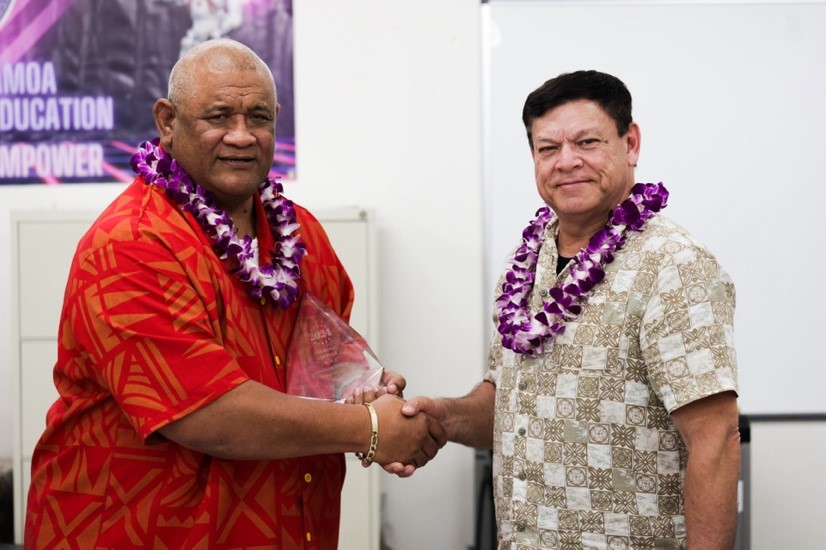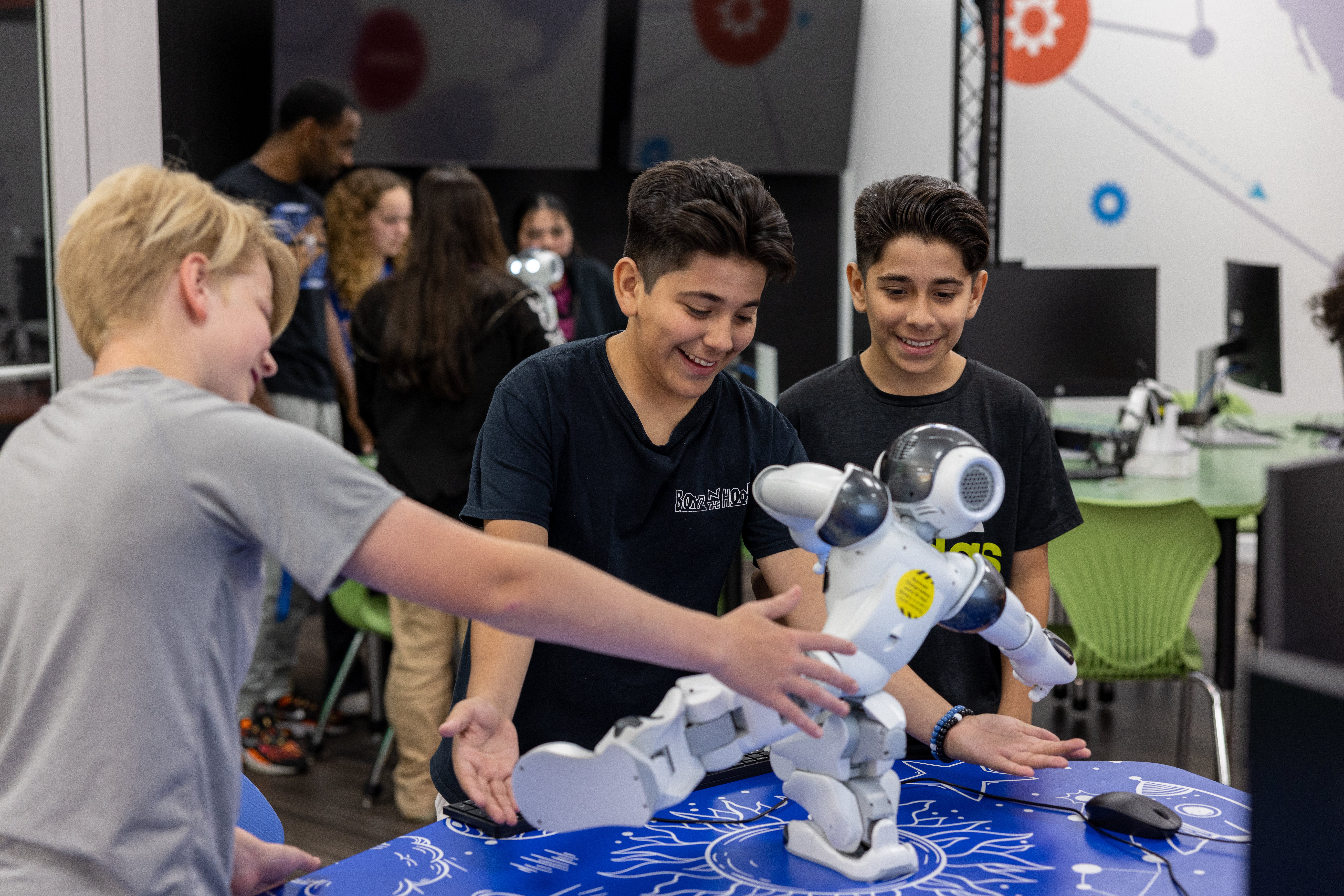RobotLAB Blog
Everything You Need To Know About Robotics in Businesses
Augmented Reality: A Tool for Teaching Students Robot Programming
By Carol Grace for RobotLAB.com

The recent years saw an increased adoption of technology in education, from the shift to virtual learning environments to the use of robotics within classrooms. For instance, a previous post highlights how collaborative robots or cobots have limitless potential not only for improving workplace health and safety but also for transforming education, particularly in the context of teaching engineering. Through open-ended, flexible programming, cobots can help students hone their problem-solving skills and adapt to more complex robotic applications.
Beyond cobots, another emerging technology that demonstrates benefits in classroom settings is augmented reality. Below, we take a look at what augmented reality is and how its applications can particularly help students better understand robot programming.
- 1 Comments
- Jun 3, 2024 10:00:17 AM
- Posted by Maria Alejandra Calcetero
- Topics: STEM, School, Robots,, k12, STEM literacy, school robots
Fostering Innovation Through Youth Education in STEM and EdTech
 Image Source: Unsplash
Image Source: Unsplash
Technological innovation is on the rise, and the world of today looks very different for most than it did ten years ago. With most having access to formerly cutting-edge tech like smartphones and tablets, and new breakthroughs in blockchain and AI technology, the difference is notable; and likely will continue to be so as these innovations become more widely accepted.
As an educator, you’ve likely seen some changes to your day-to-day operations. With cutting-edge educational technology, back-office software that eliminates manual record-keeping, and automation you can leverage to connect with students and parents, you’re seeing an unprecedented amount of technological support. You’ve also, likely, struggled to adapt and learn new systems.
- 0 Comments
- May 16, 2024 2:47:32 PM
- Posted by Maria Alejandra Calcetero
- Topics: STEM, School, Robots,, k12, STEM literacy, school robots
How Parents Can Foster STEM Learning Beyond the Classroom
 Image Source: Pexels
Image Source: Pexels
Science, technology, engineering, and math (STEM) concepts are central parts of life today. There are few jobs and everyday tasks that aren’t in some way supported or driven by advanced tools. This makes it increasingly vital that students can confidently navigate STEM subjects.
Unfortunately, there’s limited time during the school day to devote to this. As a parent, one of the ways to support their in-class education is to foster STEM learning at home. Even a little extra STEM activity, with encouragement from you, can help bolster their understanding, equipping them for the world they’ll be entering as adults.
- 0 Comments
- Apr 19, 2024 11:37:43 AM
- Posted by Maria Alejandra Calcetero
- Topics: STEM, School, Robots,, k12, STEM literacy, school robots
How Robotics Cultivates a Deep Understanding of Mathematics in Students
Image Source: Pexels
- 0 Comments
- Apr 4, 2024 12:11:37 PM
- Posted by Maria Alejandra Calcetero
- Topics: STEM, School, Robots,, k12, STEM literacy, school robots
RobotLAB Receives EDTech Chronicle 2023 ‘BESTIE’ Award for Landmark Partnership with American Samoa Dept. of Education.
The Global Robotics Integrator Earned ‘Best Partnership' for Expanding EdTech Access Across American Samoa
 |

|
American Samoa Department of Education Head of Technology Integration Office Dr. Solomona Tuisamatatele (left) and RobotLAB Director of Customer Success Paul Knaack (right)
DALLAS (April 2, 2024) – RobotLAB, an award-winning robotics integrator that delivers impactful technological innovations and solutions for educators and business owners across the globe, has earned ‘Best Partnership’ in EdTech Chronicle’s 2023 Best in Education Awards for its transformative partnership with the American Samoa Department of Education. The inaugural “Bestie” Awards recognize people and partnerships that improve education technology access and learning across the globe. Inked in late 2023, RobotLAB’s partnership with the American Samoa Department of Education provided education technology solutions for all K-12 public schools in the island nation, including special education bundles for schools that offer autism therapy. The programs expose students to age-appropriate technology and encourage a mastery of computer science, artificial intelligence, automation, STEM and robotics.
- 0 Comments
- Apr 3, 2024 8:37:22 AM
- Posted by Maria Alejandra Calcetero
- Topics: STEM, School, Robots,, k12, STEM literacy, school robots
Robotics in STEM Education: Building the Innovators of Tomorrow
By Katie Brenneman

The power of a STEM-based education will never be understated. As a society, we have a growing dependence upon advanced technologies, even in industries that don’t initially appear directly related to STEM, which makes this type of education absolutely critical. The skills learned through science, technology, engineering, and math will continue to be essential to our society far into the future.
In the coming years, chances are that STEM advances will continue to have a bigger and bigger impact on our lives. One of the ways it will happen is through the incorporation of more robotics. Thousands of jobs will be lost to robotics and automation while thousands more will be created, largely in fields associated with managing and maintaining robotic systems. To prepare for this, our students will need to become familiar with robotics and become the innovators of tomorrow.
- 0 Comments
- Apr 2, 2024 1:53:54 PM
- Posted by Maria Alejandra Calcetero
- Topics: STEM, School, Robots,, k12, STEM literacy, school robots
Empowering the Next Generation: STEM Scholarships for Robotics Students
By Devin Partida

Scholarships advance STEM education, particularly in the field of robotics. These financial aids open doors for aspiring innovators, enabling them to pursue their dreams without the burden of financial constraints.
Educators stand at the forefront of this endeavor as invaluable mentors and guides. Their insight and encouragement help students navigate scholarship applications and impact their success. Their role extends beyond teaching — they inspire the next generation of robotics professionals, shaping the future of technology and innovation.
- 0 Comments
- Feb 12, 2024 6:50:24 PM
- Posted by Maria Alejandra Calcetero
- Topics: Artificial Intelligence, AI, AI LAB
Keynote Summary: The Future of AI in Education by Dan Fitzpatrick

Dan Fitzpatrick delivered a keynote address on the future of AI in education, discussing its potential impact and challenges. Here's a summary of his insightful points:
- 0 Comments
- Feb 7, 2024 10:51:07 AM
- Posted by Maria Alejandra Calcetero
- Topics: Artificial Intelligence, AI, AI LAB
Meet Pepper the Robot: ‘We recognize that we need to be able to bridge that communication gap’
 Pepper arrived at Stillwater Center in Montgomery County in January. Photo courtesy of Stillwater Center.
Pepper arrived at Stillwater Center in Montgomery County in January. Photo courtesy of Stillwater Center.
The newest member of Stillwater Center’s team can speak multiple languages, double-check dosage information for patients and lead story time for children at the facility.
This new addition to Stillwater also stands at four feet tall and is made of metal and plastic.
- 0 Comments
- Feb 5, 2024 2:13:10 PM
- Posted by Maria Alejandra Calcetero
- Topics: Pepper, Elderly Care, Assisted Living
Financial Literacy for STEM Students: Why It Matters
By Devin Partida

Financial literacy is vital for STEM students, as it teaches them to handle money well for challenges like project funding in their careers. Such a skill empowers these learners to make wise decisions for long-term goals like buying a home or planning for retirement. Here’s why knowing how to manage money is so important in STEM.
- 0 Comments
- Jan 30, 2024 8:55:04 AM
- Posted by Maria Alejandra Calcetero
- Topics: EdTech, STEM, teachers, Coding, programming, Makerspace, Edchat, AI
Relevant Posts
- Augmented Reality: A Tool for Teaching Students Robot Programming
- Fostering Innovation Through Youth Education in STEM and EdTech
- How Parents Can Foster STEM Learning Beyond the Classroom
- How Robotics Cultivates a Deep Understanding of Mathematics in Students
- RobotLAB Receives EDTech Chronicle 2023 ‘BESTIE’ Award for Landmark Partnership with American Samoa Dept. of Education.
Subscribe to Email Updates
-
I Want To Learn MoreADDITIONAL INFORMATION
